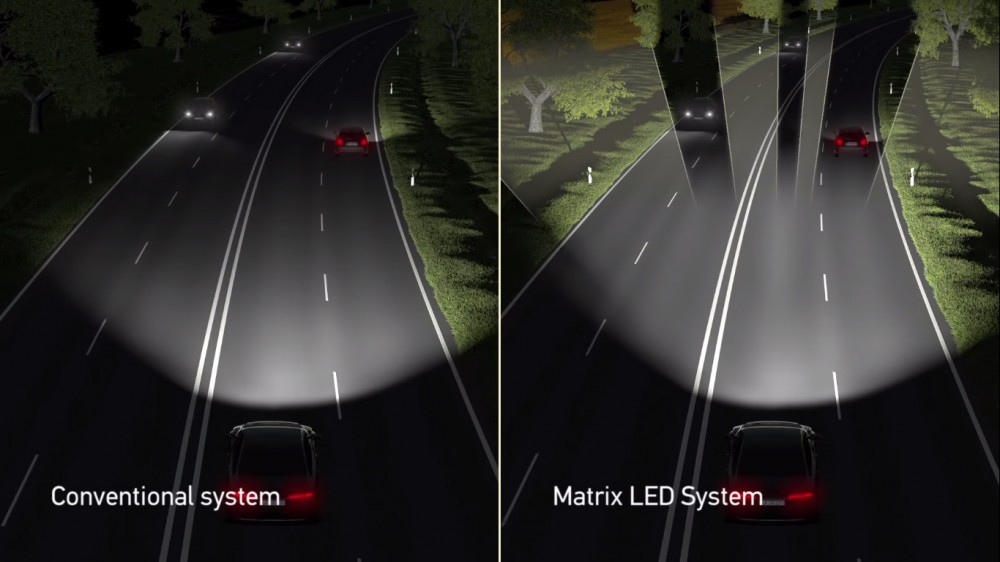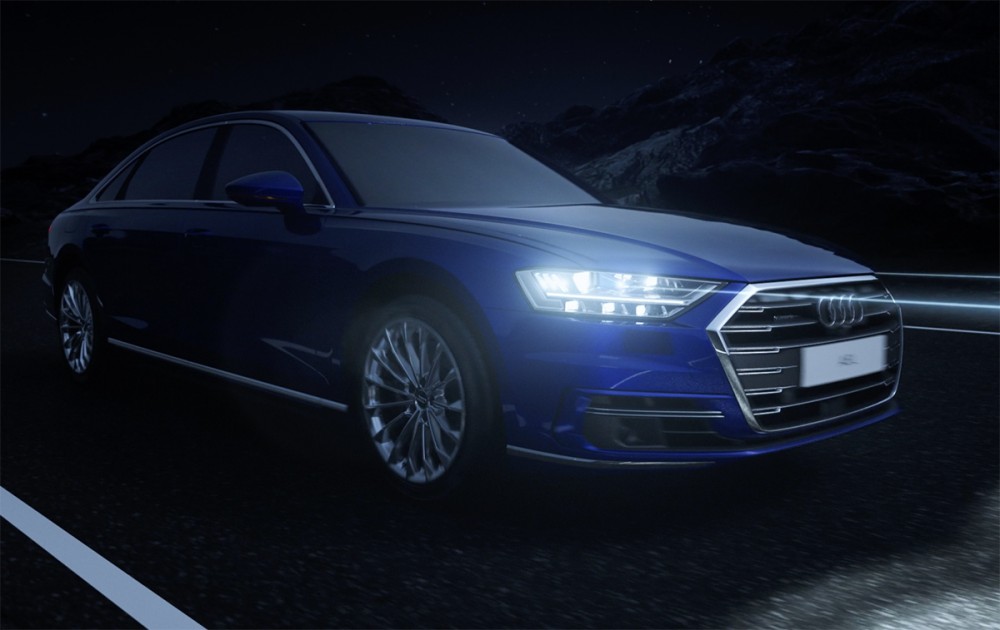Visibility is the most important thing while driving a vehicle. Not only does it make the whole experience more seamless and stress-free; it often can make the difference between life and death. Since the dawn of the automobile industry, there have been numerous attempts to make visibility better. From huge halogens to Xenons and LED setups, we have been progressing. And today we will be talking about the latest invention, Adaptive LED Matrix Headlights.
Watch our latest upload on the GoMechanic YouTube Channel
-
The Basic Idea

Matrix LED headlamps The basic idea behind these headlights is that instead of having just one component in the headlamps, it is a combination of a number of different components, each assigned with a specific task and altogether they provide better visibility to the driver; especially during night drives.
-
The Engineering

Matrix LED headlights It is a very complicated and sophisticated mechanism, but we will try to explain it as simply as possible. The principle behind Adaptive LED matrix headlights is:- pixel-level digital control over the high beam. Unlike gas burning lamps, LED’s have photons that travel through the p-n junction. Because of this, the number of pixels passing through this junction can be controlled and thus the intensity can also be controlled. Let us understand this concept thoroughly by talking about the different components.
-
Adaptive Matrix headlights vs Normal LED headlights
An Adaptive LED matrix system is designed to provide rapid and dynamic visibility control to the driver according to the driving conditions. The light power can be progressively constrained by controlling the current move through the LEDs. These semiconductor diodes can be right away initiated and require no warm up time.
The capacity to withstand a huge number of switch cycles builds up the LED. Phenomenal dimmability loans LED fog light modules uncommon adaptability. High beams also play the role of daytime running lights. In addition, LED’s reduced structure factor, strong state nature just as adaptability in optical control offer exceptional plan opportunity and designing appropriateness in this frameworks.
The traditional front lighting system has limited functionality. The driver can switch between high and low beam, improve visibility using cornering lamps and that’s it. Even this is not effective every time as it depends a lot on the positioning of the vehicle, weather etc.

-
The Working
Conventional lighting system reacts to the car’s basic driving system such as tyre rotation speed and steering wheel. An Adaptive LED system takes it up a notch further. It combines with the car’s onboard camera and lays out an image of the road ahead. Traffic, road conditions and weather are taking into account and according to that the lamps adapt and react. Additionally, the GPS system helps it perform adaptive headlight control.
Pretty heavy stuff isn’t it? Although the adaptive LED matrix system is very seamless and effective, it is costly too and that’s why only big brands like Mercedes Benz, BMW and Audi use them. Would you pay extra to have this system in your car? Let us know in the comments.
Check out for more- Follow Me Home Headlights And Why It’s NOT A Gimmick
Stay Updated- 2021 Isuzu D-Max V-Cross Teased on Official Website







Good content
Thank you and yes, I’d love to be able to drive after sunset. I feel handicapped. My question though, how do these Matrix LED lights affect oncoming drivers?
They don’t. Ingoing drivers won’t be illuminated. That’s the whole point.